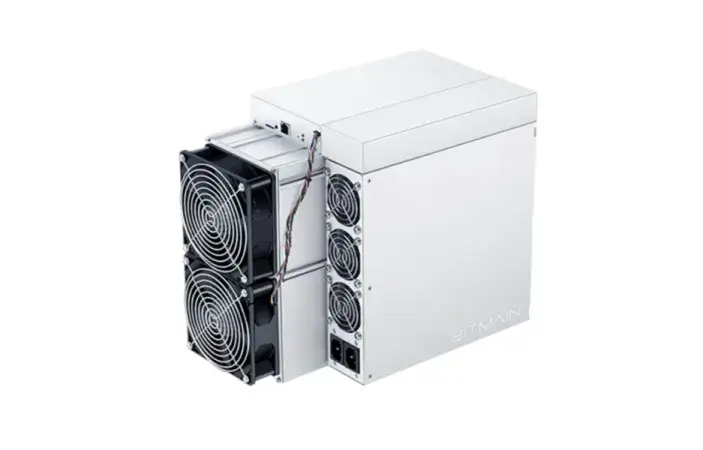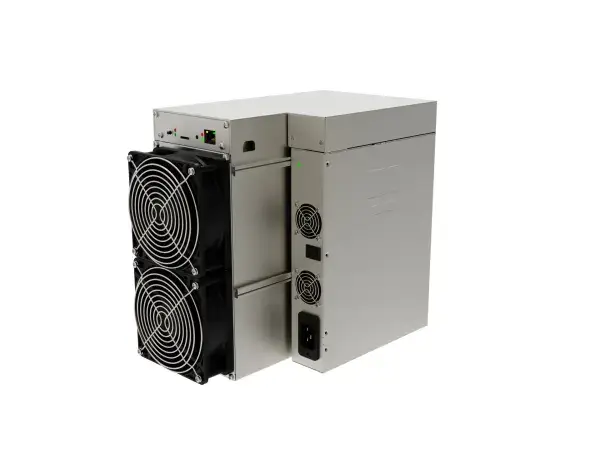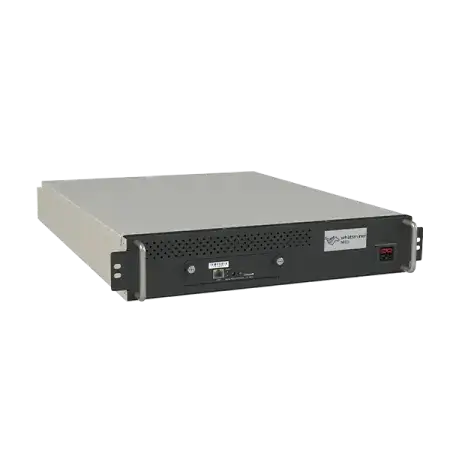In the ever-evolving world of the cryptocurrency mining industry, finding the most profitable ASICs (Application-Specific Integrated Circuits) is crucial for miners seeking optimal returns.
Although cryptocurrency mining is not as common as it was a few years ago, it plays an essential role in the industry and (still) makes a lot of money for miners. That’s why finding the most profitable ASICs (Application-Specific Integrated Circuits) is crucial.
As we are in 2024, the crypto mining landscape continues to evolve, with new ASIC models offering unprecedented power and efficiency.
In this article, we will delve into specialized hardware devices for mining cryptocurrencies and explore the best ASICs that promise to deliver exceptional profitability in the year ahead.
Most Profitable ASICs – The Best ASIC Mining Rigs in 2024
To cut a long story short, the best ASICs for mining in 2024 identified by us are the following:
For more details, read on to find out everything you need to know about each ASIC featured in this top so you can more easily make the right decision and do your research.
1. Bitmain Antminer KS5 Pro
In a nutshell specs of Antminer KS5 Pro:
Efficiency: 150 J/TH;
Release Date: March 2024;
Dimensions (mm): 570x316x430;
Hashrate: 21 TH/s;
Algorithm: kHeavyHash;
Weight: 17,700 g;
Watts: 3,150 W;
Manufacturer: Bitmain;
Price: €32.499, VAT excl.
Released in March 2024, the Bitmain Antminer KS5 Pro is maybe one of the best ASIC miners for mining cryptocurrencies designed for the kHeavyHash algorithm, despite its short period in the market. It caters to professional miners seeking a balance between performance and operating efficiency.
Boasting a hashrate of 21 Th/s, the KS5 Pro delivers impressive raw processing power to tackle demanding mining tasks. Furthermore, it maintains a moderate energy consumption of 150 J/Th, making it a more cost-effective option than less-efficient miners.
However, one crucial aspect to consider at this ASIC mining rig is its big power consumption. With a draw of 3,150W, the KS5 Pro necessitates a high-voltage industrial outlet to function. This can significantly impact potential buyers, as it requires factoring in not only the miner’s cost but also necessary infrastructure upgrades to accommodate its power demands.
Pros of Bitmain Antminer KS5 Pro
High hashrate;
Power efficiency;
Established brand;
Scalability.
Cons of Bitmain Antminer KS5 Pro
Initial investment cost;
Availability;
Regular maintenance;
Power consumption.
2. iBeLink BM-KS Max
In a nutshell specs of iBeLink BM-KS Max:
Efficiency: 323.81 J/TH;
Release Date: February 2024;
Dimensions (mm): 424x289x388;
Hashrate: 10.50 TH/s;
Algorithm: kHeavyHash;
Weight: 12,200 g;
Watts: 3,400W;
Manufacturer: iBeLink;
Price: $11,160.
The iBeLink BM-KS Max is another new player in the ASIC mining scene, specifically designed for the Kaspa cryptocurrency. Launched in February 2024, it targets miners seeking dedicated hardware to tackle the KHeavyHash algorithm that Kaspa utilizes.
Packing a hashrate of 10.5 Th/s, the BM-KS Max offers efficient processing power to churn out Kaspa coins.
While not the most energy-friendly miner on the market, its 323.81 J/Th efficiency rating suggests a balance between performance and power consumption compared to some alternatives.
An air cooling system equipped with four high-speed fans helps maintain optimal performance by efficiently dissipating heat during operation, potentially extending the miner’s lifespan.
However, despite its moderate efficiency rating, it draws a significant 3,400W of power, necessitating a high-voltage outlet and potentially requiring upgrades to your electrical infrastructure to handle this demand.
As a new release, the BM-KS Max might also face limited stock or regional availability.
Additionally, the air cooling system generates a noise reaching 75dB, comparable to a loud conversation.
Pros of iBeLink BM-KS Max
High hashrate;
Power efficiency;
Cooling system.
Cons of iBeLink BM-KS Max
Noise level;
Power consumption;
Availability and scalability;
Regular maintenance.
3. Bitmain Antminer KS3

In a nutshell specs of Bitmain Antminer KS3:
Efficiency: 377.66 J/TH;
Release Date: August 2023;
Dimensions (mm): 195x290x430;
Hashrate: 9.40 TH/s;
Algorithm: kHeavyHash;
Weight: 16,100 g;
Watts: 3,550W;
Manufacturer: Bitmain;
Price: $14,000.
Our third choice, related to the best ASIC mining rigs, is Antminer KS3. The Bitmain Antminer KS3 is a powerful ASIC miner launched in August 2023, designed for cryptocurrencies that rely on the kHeavyHash algorithm.
The KS3 boasts a strong hashrate of 9.4 Th/s, translating to efficient processing of kHeavyHash algorithms and potentially leading to higher coin earnings.
This ASIC miner rig offers a relatively compact design compared to some high-performance models. This can be beneficial for users with limited space for their mining operations.
Equipped with two fans, the KS3 should maintain adequate airflow for heat dissipation during operation, potentially extending its lifespan.
The KS3 draws a significant 3,500W of power, necessitating a high-voltage outlet and potential upgrades to your electrical infrastructure to handle this demand.
Additionally, the miner generates noise around 75dB, similar to a loud conversation.
Pros of Bitmain Antminer KS3
High hashrate;
Power efficiency;
Reputable company;
Compact design;
Dual fan cooling.
Cons of Bitmain Antminer KS3
Moderate noise level;
Regular maintenance;
Power consumption.
4. Bitmain Antminer K7 (63.5 Th)

In a nutshell specs of Antminer K7:
Efficiency: 0.049 J/Gh;
Release Date: January 2023;
Dimensions (mm): 195x290x400;
Hashrate: 63.5 TH/s;
Algorithm: Eaglesong;
Weight: 14,000 g;
Watts: 3,080W;
Manufacturer: Bitmain;
Price: $4,500.
Bitmain Antminer K7 (63.5 Th) was released in January 2023, and it was a highly anticipated addition to Bitmain’s impressive lineup of crypto miners. This mining equipment is the sole Application Specific Integrated Circuit (ASIC) to rank among the top in 2023 and maintain its position in the top in 2024.
Designed to harness the power of the Eaglesong algorithm, this miner boasts a maximum hashrate of 63.5 Th.
In addition to its exceptional performance, the Antminer K7 consumes a maximum of 3,080W, making it a formidable force in cryptocurrency mining. The miner’s design remains unchanged compared to its previous model, as there seem to be no notable modifications.
The manufacturer touts the Antminer K7 as the next-generation refinement, claiming it to be the most potent CKB Nervos miner available.
With a remarkable energy consumption of 3,080W, the Bitmain K7 achieves an impressive efficiency rating of 0.049J/Gh. This energy-intensive design ensures high productivity, enabling miners to solve block puzzles faster.
Equipped with two fans for efficient cooling, the Bitmain K7 tackles temperature regulation effectively. However, users should know that the miner operates at a maximum sound capacity of 75dB, making it a relatively loud device, given its focus on mining a single coin.
Pros of Bitmain Antminer K7 (63.5 Th)
High hashrate;
Energy efficiency;
Cooling system.
Cons of Bitmain Antminer K7 (63.5 Th)
Noise level;
Limited modifications;
Regular maintenance;
Single-coin focus – You can mine only Nervos (CBK).
5. IceRiver KS3

In a nutshell specs of IceRiver KS3:
Efficiency: 400 J/TH;
Release Date: September 2023;
Dimensions (mm): 370x195x290;
Hashrate: 8 TH/s;
Algorithm: kHeavyHash;
Weight: 14,400 g;
Watts: 3,200W;
Manufacturer: IceRiver;
Price: $12,199.
The IceRiver KS3 is an ASIC miner explicitly designed for the kHeavyHash algorithm, and it’s the only ASIC we mentioned in this top from IceRiver.
The KS3 boasts a hashrate of 8 Th/s, translating to efficient processing power for mining kHeavyHash cryptocurrencies and potentially leading to higher coin earnings.
The 400 J/Th efficiency rating suggests it might strike a balance between performance and power consumption compared to some alternatives. This falls within the mid-range for kHeavyHash miners.
The KS3 marks a significant 3,200W of power, necessitating a high-voltage outlet and potentially upgrades to your electrical infrastructure to handle this demand. Remember to factor in electricity costs when calculating potential profitability.
Additionally, while official noise level specifications are missing, similar miners with this power consumption typically generate noise around 70-75dB, similar to a loud conversation.
Pros of IceRiver KS3
High hashrate;
Power efficiency;
Compact design.
Cons of IceRiver KS3
High initial investment;
Moderate noice Level;
Regular maintenance;
Power consumption.
6. MicroBT Whatsminer M63S Hydro

In a nutshell specs of MicroBT Whatsminer M63S Hydro:
Efficiency: 18.59 J/TH;
Release Date: October 2023;
Dimensions (mm): 483x663x86;
Hashrate: 390 TH/s;
Algorithm: SHA-256;
Weight: 27,500 g;
Watts: 7,250W;
Manufacturer: MicroBT;
Price: $11.300.
If, up to this point, no ASIC utilizing the SHA-256 algorithm—specifically designed for mining Bitcoin, Bitcoin Cash, or other prominent cryptocurrencies—has reached the top rankings, it’s time to introduce the MicroBT Whatsminer M63S Hydro.
The MicroBT Whatsminer M63S Hydro is a high-performance ASIC miner explicitly designed for Bitcoin (SHA-256) mining. Its exceptional processing power and innovative water-cooling technology stand out from the competition.
The water-cooling system promises a major advantage in heat dissipation compared to traditional air-cooled miners. This potentially leads to improved efficiency and lower operating costs in the long run.
However, there are some important considerations before investing in the M63S Hydro. For example, remember that water-cooled systems generally require more maintenance than air-cooled miners. Users should be prepared for regular tasks like refilling the coolant and monitoring the system’s health.
Pros of MicroBT Whatsminer M63S Hydro
High hashrate;
Power efficiency.
Cons of MicroBT Whatsminer M63S Hydro
Noise level;
High-maintenance system;
Power consumption.
What Is an ASIC?
ASIC, which stands for Application-Specific Integrated Circuit, is a computerized hardware initially introduced to the crypto industry by Bitmain Technologies. This computerized hardware is specifically designed for cryptocurrency mining, offering faster processing speeds and lower energy consumption than earlier products, such as CPUs and GPUs.
As far as they are concerned, ASICs are typically developed for mining specific types of cryptocurrencies using particular algorithms.
Using ASIC miners efficiently generates quick profits despite the high cost and complexity of building them. The speed of ASICs surpasses that of GPUs and CPUs, making them a preferred choice, especially by large mining companies. The latest ASIC models can solve a Terahash, equivalent to processing a trillion complex equations while consuming at least 29.5 joules of energy.
Among the industry-leading ASIC series is Bitmain’s Antminer, known for its exceptional productivity. Generally, these devices consume over 3,250W of power and can achieve an impressive hash rate of 110 trillion hashes per second. However, it’s important to note that their price exceeds $2,000, which may be considered steep for beginners.
For many, Bitmain Antminer has become synonymous with ASICs, solidifying their position as industry leaders in their production. However, it’s essential to recognize that other notable manufacturers in the market contribute to the ASIC ecosystem.
What Is ASIC Mining and How Does It Work?
Now we know what an ASIC is, but what is ASIC mining?
ASIC mining is the process where crypto miners use dedicated hardware (ASIC computers) to mine crypto. ASIC computers use complex mathematical algorithms to solve complex equations and mine a crypto block. A user receives crypto rewards through ASIC mining for validating transactions on a specific blockchain.
The Proof-of-Work (PoW) mechanism ensures that a transaction block will only be added to the chain once validated and verified. This process is conducted after a mathematical equation has been solved successfully. During the PoW process, the miners are chosen based on the computational power they provide for mining a specific cryptocurrency.
Is ASIC Mining Profitable?
And since you’re interested in ASICs, you’re probably also interested in whether they’re profitable, right?
Well, the profitability of ASIC mining for various cryptocurrencies is a dynamic landscape that constantly evolves in response to market conditions.
ASICs can yield substantial profits in bullish market phases, with payback periods spanning several months to a year. However, during bearish market trends, the profitability of ASIC mining can significantly decline, leading to extended payback periods that can span several years.
Thus, it becomes crucial to remain well-informed about the latest market trends in order to optimize profitability and focus ASIC mining efforts on the most lucrative coins available at any given time.
Also, keep in mind that you should constantly check which cryptos are the best to mine to make a profit.
FAQs
How to Set Up an ASIC Miner?
Here are the simple steps to set up your own ASIC miner:
Evaluate the feasibility and costs – Determine if building an ASIC miner is cost-effective by considering expenses like hardware, electricity, and mining software and calculating potential profitability;
Acquire the necessary components – Purchase essential components like hashboards, heatsinks, cooling fans, RAM, printed circuit boards, power supply unit (PSU), and the rig frame;
Assemble the ASIC miner – Build the miner by assembling the rig frame, attaching the fans, positioning the PCB and hashboards, and connecting the PSU;
Install mining software – Choose the appropriate mining software for the specific cryptocurrency you want to mine and install it on your ASIC miner;
Set up a wallet and join a mining pool – Create a wallet for the cryptocurrency you’re mining and find a reliable mining pool to join. This allows you to combine your mining power with others for more consistent earnings;
Start mining – Connect your ASIC miner to the blockchain network, power it up, and begin mining the cryptocurrency of your choice.
How Much Does an ASIC Miner Make?
The earnings of an ASIC miner depend on various factors, including the miner’s hashrate (computational power), the efficiency of the miner, the electricity cost, the current cryptocurrency market conditions, and the mining difficulty of the specific cryptocurrency being mined.
Besides, profitability can vary over time as market prices and mining difficulty fluctuate. To find out more clearly how much an ASIC miner makes, you can use an online calculator, depending on the ASIC board you are interested in.
What Is the Most Profitable ASIC Miner?
Based on our research, the most profitable ASIC miner is Bitmain Antminer KS5 Pro, followed by iBeLink BM-KS Max, Bitmain Antminer KS3, Bitmain Antminer K7 (63.5 Th), IceRiver KS3, and MicroBT Whatsminer M63S Hydro.
In Conclusion
ASIC mining is the next-generation technology for worldwide crypto enthusiasts. Compared to CPUs or GPUs, ASICs are much more effective and consume less power.
When choosing the most profitable ASIC miner, users should consider several factors, including the cryptocurrency in question and the type of hardware needed.
In some cases, the more expensive models can bring bigger profits, yet in others, the difference can be compensated by buying more units.
* The information in this article and the links provided are for general information purposes only
and should not constitute any financial or investment advice. We advise you to do your own research
or consult a professional before making financial decisions. Please acknowledge that we are not
responsible for any loss caused by any information present on this website.





















